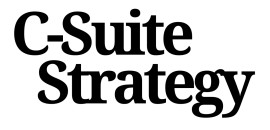
Understanding the Role of Executive Briefings
The Foundation of Strategic Alignment
Understanding the role of executive briefings is crucial for any executive aiming to steer their organization towards strategic success. At its core, an executive briefing serves as a pivotal document that provides senior leaders with essential insights into a business project, a strategic plan, or an organizational change. It's a bridge that connects the high-level overview with the actionable details needed by the c-suite.
The value of an executive summary lies in its ability to distill complex information into a digestible format. This is not merely a summary; it's a well-crafted briefing document that brings clarity to the key elements of any strategic business initiative. Typical components include market analysis, project updates, and strategic direction, each section tailored to ensure the content resonates with the target audience.
For instance, a robust executive briefing can effectively highlight the current market landscape, providing actionable insights based on a detailed analysis. It might utilize a template executive summary that allows for easy edit and updates, ensuring that it remains relevant and impactful.
The role of strategic alignment cannot be overstated, as it guides executives in prioritizing initiatives that align with the organization's overarching goals. In the world of strategic planning, remember that an effective executive summary does more than inform—it empowers decision-makers to act with confidence.
Key Components of a Successful Executive Briefing
Essential Elements for a Compelling Executive Briefing
Crafting an effective executive briefing requires a keen understanding of its core components. These elements serve as the foundation for delivering a clear and concise message that resonates with your audience. Here’s a breakdown of the key components that should be included in every executive briefing:
- Executive Summary: Begin with a succinct executive summary that provides an overview of the main points. This section should capture the essence of the briefing, allowing busy executives to grasp the key messages quickly.
- Business Context: Set the stage by outlining the business context. This includes a brief market analysis and an overview of the current business environment, helping to frame the discussion and highlight the relevance of the briefing.
- Project or Product Overview: Provide a detailed overview of the project or product in focus. This section should include essential details such as objectives, timelines, and any critical milestones that have been achieved or are upcoming.
- Key Insights and Analysis: Dive into the data and analytics that support your briefing. Highlight key insights that are backed by thorough analysis, ensuring that your audience understands the implications and potential impact on the business.
- Strategic Recommendations: Offer clear and actionable strategic recommendations. This is where you guide the executive team on the next steps, providing a roadmap for decision-making and implementation.
- Conclusion and Call to Action: Wrap up the briefing with a strong conclusion that reiterates the main points and includes a call to action. Encourage your audience to take specific steps or make decisions based on the information presented.
For more insights on enhancing your strategic vision, consider exploring this resource that delves into the value of strategic thinking.
Tailoring Briefings to Your Audience
Adapting Briefings for Optimal Audience Engagement
To ensure executive briefings are truly impactful, it's essential to tailor them to the specific needs, interests, and expectations of your audience. An executive summary should resonate with those who will be reviewing it, whether they are part of the executive committee or stakeholders from outside the company.
Begin by identifying the key elements that your audience is most invested in. This often includes understanding their primary concerns and aligning the briefing document to address these issues. For example, a board member might be more interested in market analysis and the potential for business growth, while a department head might focus on the strategic project details and operational impacts.
Providing a concise yet comprehensive overview in your executive summaries helps to maintain focus on what really matters to your audience. Utilizing a summary template can streamline the creation process, allowing easy edits and adjustments to suit different perspectives. While doing this, ensure the template executive remains flexible to incorporate feedback and insights specific to your target audience.
Another vital component of tailoring is the inclusion of concrete data and analysis. These elements not only provide an overview of the current business environment but also back up your strategic projections and business plan. A well-drafted market analysis, for instance, should offer clarity on key market trends that influence business scenarios.
The summary slide, often a part of the executive presentation, should serve as a powerful tool to succinctly capture the essence of your briefing. It's recommended to craft slides that highlight the presentation's primary message and include examples that are easy to grasp. A successful briefing will weave in data, offer executive summaries of strategies being proposed, and provide detailed analysis where necessary.
As you create executive briefings, consider leveraging innovative financial approaches to captivate your audience's attention. Emphasizing strategic financial stances can deliver an additional layer of engagement and understanding.
Leveraging Data and Analytics
Data-Driven Decisions for Impactful Presentations
An effective executive briefing integrates hard data and insightful analytics into its structure. Presenting key information garnered through business analysis—whether it's from market analysis, project reviews, or sales reports—will provide a robust foundation for your discussions.
An executive summary infused with data can transform a basic report into a strategic asset. Visualize data through clear, concise summary slides, allowing the audience to grasp intricate details with minimal confusion. A tailored template executive presentation could include essential visuals such as charts, graphs, and tables. Such visuals not only enhance understanding but also ensure important takeaways are easily remembered.
Make use of summary templates to present your findings coherently. For example, a well-crafted summary document or slide can summarize a complex business plan in a few key insights, ensuring that your audience can easily edit their understanding as new information becomes available.
Finally, when leveraging data, balance quantitative analysis with qualitative insights. A briefing document that embodies both the numbers and the narrative will resonate more strongly with executives who must weigh these facets when strategizing company goals.
Best Practices for Presentation and Delivery
Mastering the Art of Presentation
When it comes to delivering an executive briefing, the presentation is as crucial as the content itself. A well-crafted presentation can make the difference between a successful briefing and one that falls flat. Here are some key elements to consider:
- Clarity and Conciseness: Ensure your presentation is clear and to the point. Use an executive summary to provide an overview of the main points. This summary slide should highlight the key elements of your business plan or project.
- Engaging Visuals: Utilize visuals such as graphs and charts to illustrate market analysis and other data. These visuals should complement your verbal presentation, making complex information more digestible.
- Structured Flow: Organize your briefing document in a logical sequence. Start with an introduction, followed by a detailed analysis, and conclude with actionable insights. A summary template can help maintain this structure.
- Rehearsal: Practice your delivery to ensure smooth transitions between slides and topics. This will help you maintain a steady pace and engage your target audience effectively.
Engaging Your Audience
Understanding your audience is crucial for an effective executive briefing. Tailor your presentation to address their specific interests and concerns. This involves:
- Customization: Adapt your briefing to the audience's level of expertise and familiarity with the subject. Use examples and case studies relevant to their industry or market.
- Interactive Elements: Encourage questions and discussions to foster engagement. This can provide valuable feedback and insights into the audience's perspective.
- Feedback Mechanism: Implement a system for collecting feedback post-presentation. This will help evaluate the impact of your briefing and identify areas for improvement.
By focusing on these presentation and delivery strategies, you can enhance the effectiveness of your executive briefings, ensuring they provide value and drive strategic success.
Evaluating the Impact of Executive Briefings
Assessing the Effectiveness of Executive Briefings
Evaluating the impact of your executive briefing is crucial to ensure that it meets its strategic objectives. This process involves a thorough analysis of how well the briefing conveyed the intended message and whether it influenced decision-making at the executive level.
Key Metrics for Evaluation
- Engagement Levels: Measure the engagement of your audience during the briefing. Did the executives ask questions or provide feedback? High engagement often indicates that the briefing resonated with them.
- Decision Outcomes: Analyze the decisions made post-briefing. Were the key elements of your business plan or project overview considered in these decisions? This can be a strong indicator of the briefing's success.
- Feedback Collection: Gather feedback from the participants. Use surveys or direct interviews to understand their perspective on the briefing's effectiveness.
- Follow-up Actions: Monitor the actions taken after the briefing. Effective executive summaries and briefing documents should lead to actionable insights and strategic moves.
Continuous Improvement
To ensure ongoing success, continuously refine your executive briefing process. Utilize feedback to adjust your presentation and delivery methods. Consider updating your templates and summary slides to better align with the target audience's needs. By doing so, you can create executive briefings that not only inform but also drive strategic success.
Remember, the ultimate goal of an executive briefing is to provide a comprehensive overview that supports informed decision-making. By leveraging data and analytics, tailoring your message to the audience, and adhering to best practices in presentation, you can enhance the effectiveness of your briefings and contribute to the overall strategic objectives of your organization.














